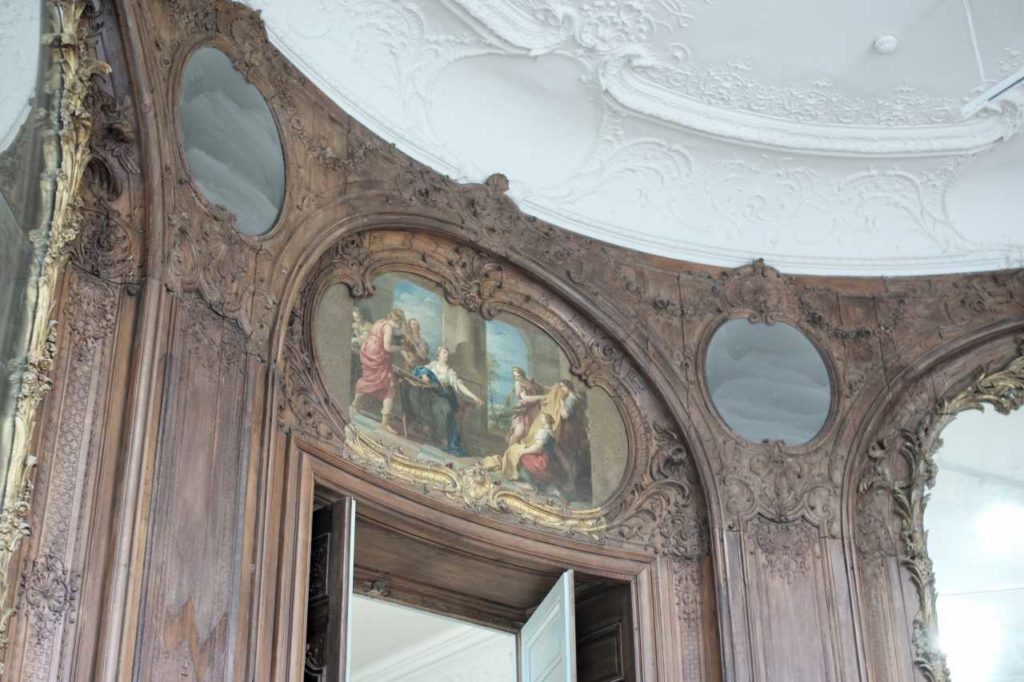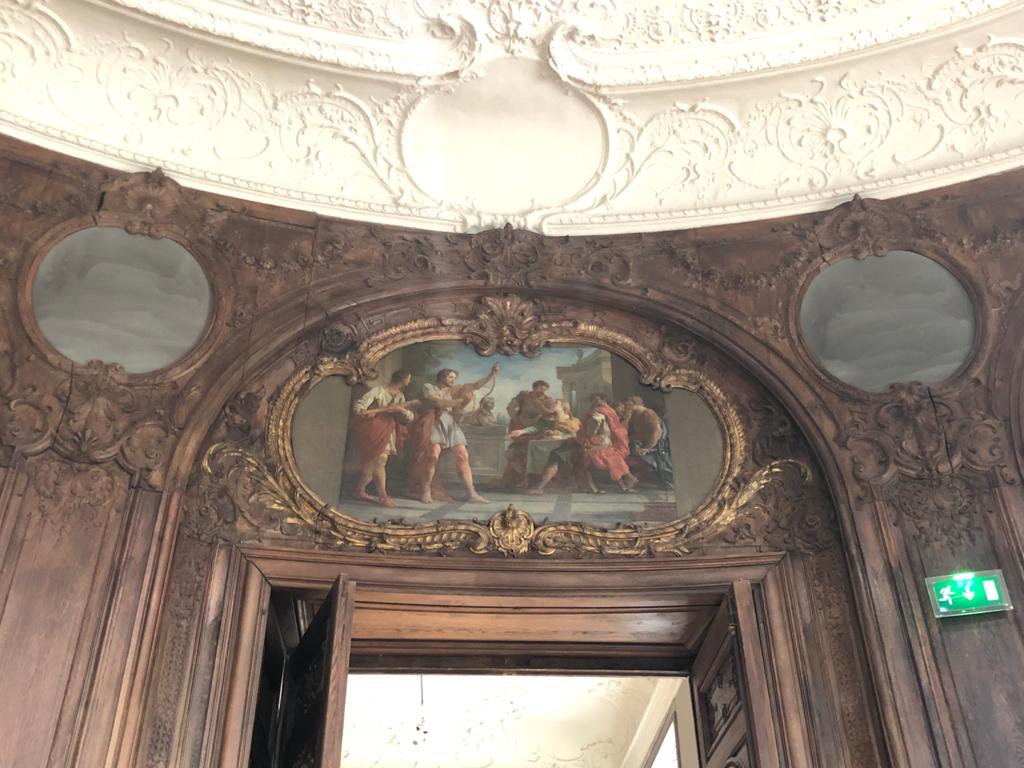by Ambrine Lazreug-Didier
The reopening of the museums is an opportunity to discover or rediscover exhibitions and permanent collections, but also to note that the institutions have not remained beautiful sleepers.
Thanks to the patronage of Mrs. Zhang Chencheng, a young Chinese philanthropist, the Musée Rodin has undertaken work to embellish the 18 medallions of the Hôtel Biron, which houses the museum. Three contemporary artists, from three continents, were chosen for their realization.

Among them, Li Xin, nicknamed in China « the painter of water », who created the 6 medallions of the Danaids room. It is quite natural that the painter’s work has taken place in this rotunda room, where Rodin’s Danaid is presented in its center. This sculpture, otherwise known as The Source, confuses water and body, giving the illusion of liquid marble. Li Xin’s works are also the imprint of the passage of water that has flowed and then fixed itself forever on the canvas. Influenced by the landscapes of the Yellow River where he grew up, the artist’s work is inspired by the random reflections of water.
Incorporating the woodwork near the ceiling, these six paintings of a deep and nuanced gray, with a rendering that is both mineral and vaporous, are a dialogue with the sculptures of Rodin. This room tells the story of the meeting of two gestures : the subtle and hazardous one of the painter-calligrapher and the voluntary and audacious one of the sculptor.

La réouverture des musées est l’occasion de découvrir ou de redécouvrir des expositions, des collections permanentes, mais également de constater que les institutions ne sont pas restées de belles endormies.
Grâce au mécénat de Madame Zhang Chencheng, jeune philanthrope chinoise, le Musée Rodin a entrepris des travaux d’embellissement des 18 médaillons de l’hôtel Biron abritant le musée. Trois artistes contemporains, de trois continents ont été choisis pour leur réalisation.
Parmi eux, Li Xin, surnommé en Chine « le peintre de l’eau », qui a réalisé les 6 médaillons de la salle des Danaïdes. C’est tout naturellement que le travail du peintre a pris place dans cette salle en rotonde, où est présentée en son centre La Danaïde de Rodin. Cette sculpture, autrement appelée La Source, confond l’eau et le corps, donnant l’illusion d’un marbre liquide. Les œuvres de Li Xin sont également l’empreinte du passage de l’eau qui s’est écoulée puis s’est fixée à jamais sur la toile. Marqué par les paysages du fleuve Jaune au bord duquel il a grandi, le travail de l’artiste s’inspire des reflets aléatoires de l’eau.
Intégrant les boiseries proches du plafond, ces six peintures d’un gris profond et nuancé, au rendu à la fois minéral et vaporeux, sont un dialogue avec les sculptures de Rodin. Cette salle raconte la rencontre de deux gestes : celui subtil et hasardeux du peintre-calligraphe et celui volontaire et audacieux du sculpteur.

